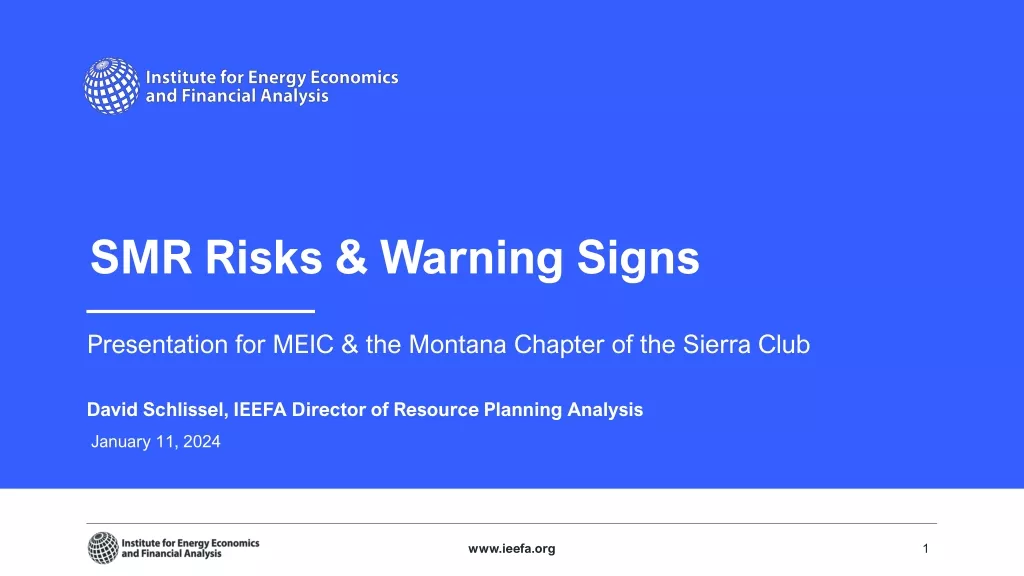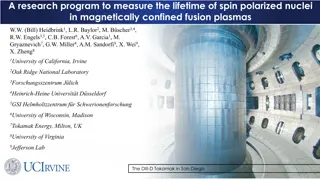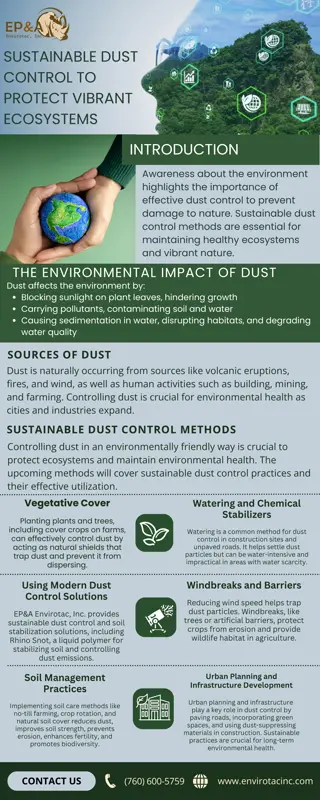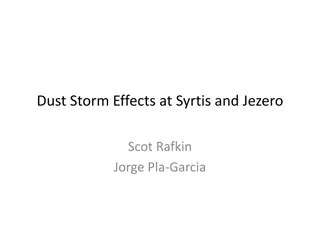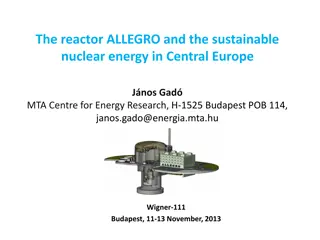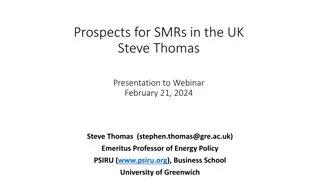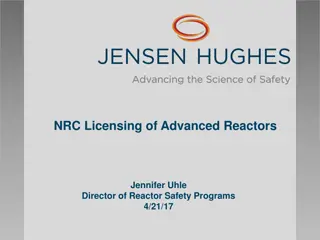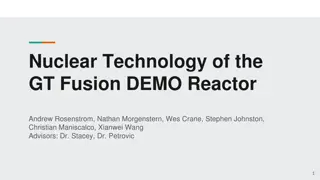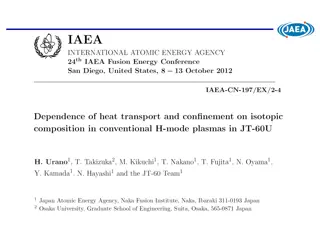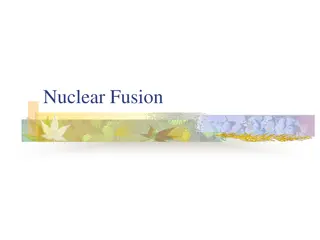Investigating Be Dust Generation for Fusion Reactors
Investigate the properties of beryllium (Be) dust particles generated using milling techniques for fusion reactors. The study involves analyzing particle size, morphology, crystal orientation, and thermal behavior of Be dust in air and water environments. Laboratory experiments will be conducted to characterize Be dust in the presence of air and water leaks in fusion reactors, including the JET-ILW campaigns. The goal is to ensure the representative nature of the generated dust for future fusion reactor conditions.
Download Presentation

Please find below an Image/Link to download the presentation.
The content on the website is provided AS IS for your information and personal use only. It may not be sold, licensed, or shared on other websites without obtaining consent from the author.If you encounter any issues during the download, it is possible that the publisher has removed the file from their server.
You are allowed to download the files provided on this website for personal or commercial use, subject to the condition that they are used lawfully. All files are the property of their respective owners.
The content on the website is provided AS IS for your information and personal use only. It may not be sold, licensed, or shared on other websites without obtaining consent from the author.
E N D
Presentation Transcript
SP B 5 Be dust formation plans for 2023 and comparison against JET- ILW results (IAP) Cristian P. Lungu , Corneliu Porosnicu, Bogdan Butoi, Paul Dinca, Oana Pompilian, Cornel Staicu IAP NILPRP (INFLPR)
Be dust generation using milling technique Be dust generation in air and water environment performed using alumina ball milling Particle size and morphology determined using SEM microscopy Preffered cristal orienatation analyzed using XRD Thermal outgas behavior, using TDS. Were identified: O2, N2, H2O, BeO, Be3N2, Be(OH)2 1. 2. 3. 4. 6 30 800 o) o) Mass 25 (BeO) Be 002 (50,92 Be 101 (52,78 D10_dry D10_wet D20_dry D20_wet D35_dry D35_wet D50_dry D50_wet D61_dry D61_wet 700 D61 Dry D61 Wet 25 o) o) o) Be 100 (45,8 Al2O3 113 (43,36 BeO 101 (43,54 600 540oC XRD intensity, a.u. 20 4 o) Temperature (oC) Ion Current (pA) BeO 002 (41 500 Agathe o) o) o) 15 Al2O3 116 (57,5 BeO 102 (57,6 400 Al2O3 211 (57,5 BeO 300 10 2 200 5 100 0 0 0 1000 2000 3000 Time (s) 4000 5000 6000 40 45 50 55 60 65 2 TDS analysis of samples: - formation of oxides and nitrides as follows: - BeO, H2O, N2, Be(OH)2 content - higher for wet environment samples - Be, O2 and Be3N2 content - higher for dry condition samples. This suggests that water is present in Be dust as: - pure H2O non-reacted; - oxygen to form BeO; - (OH) to form Be(OH)2 . The maximum desorption temperatures: - H2O: ~ 190oC; - BeO: ~ 540oC. XRD Measurements Particle size and morphology: Shifts to small angles: suggesting the spacing of the crystalline planes, due a tensile stress polycrystalline structure. The BeO diffraction are present for samples prepared in wet condition. Alumina and agate used in the milling process appeared too: more obvious in wet conditions Micrometric size particles (30 to 500 m) were prepared by ball milling and were collected on the different ranges by siewing. Rough surfaces were identified on dust particles. in the Be
Investigate the properties Be dust particles produced in conditions expected in fusion reactors Scope: Ensure that the dust applied in laboratory experiments would be representative for fusion-reactor conditions (JET-ILW Campaigns) Putting all the data available from present devices together to see if extrapolations can be made for metallic dust generation or if there are gaps that would call for new experimental activities in >2024 Inputs required: Set-up for Be dust generation Tasks to be performed: Carry-out laboratory experiments of Be dust generation in presence of air and water leaks in D2, D2/H2 buffer gas. Chracterization of the Be dust using SEM, XRD and TDS techniques Outputs: Laboratory processes for Be dust generation in presence of water and air-leaks Database of the characteristics of produced Be dust particles and comparison with data from tokamaks (JET-ILW)
Investigate the properties Be dust particles produced in conditions expected in fusion reactors Be dust generation Be dust produced in normal (D2 atmosphere) and off-normal (air and water leaks) conditions in fusion reactors - Apparatus: a DC / pulsed reactor working in deuterium or H2/D2 mixture gas. Addition of water and air will be performed. An arc discharge will be ignited between a 1 inch Be plate and a W tip. - Operating parameters: - low pressure gas discharge. 1- 100 Mbar - Electrical parameters: 1-100 A, 100 -1000 V - Expected dust sizes: 0.5 -500 m,
Investigate the properties Be dust particles produced in conditions expected in fusion reactors Be dust characterization Analysis capabililties: Particle size and morphology of the produced dust will be analized using a SEM (Scaning Electron Microscopy) techinque using a FEI Co. Model Inspect microscope. Crystallite compounds formation will be determined using an XRD Rigaku ULTIMA IV, XRD configuration and an ESCALAB 250 XPS system Thermal outgassed compound content (D2, O, H2O, BeO, Be(OH)2) of the dust will be determined using Thermal Desorption Spectrometry (TDS). apparatus, Bragg Brentano



